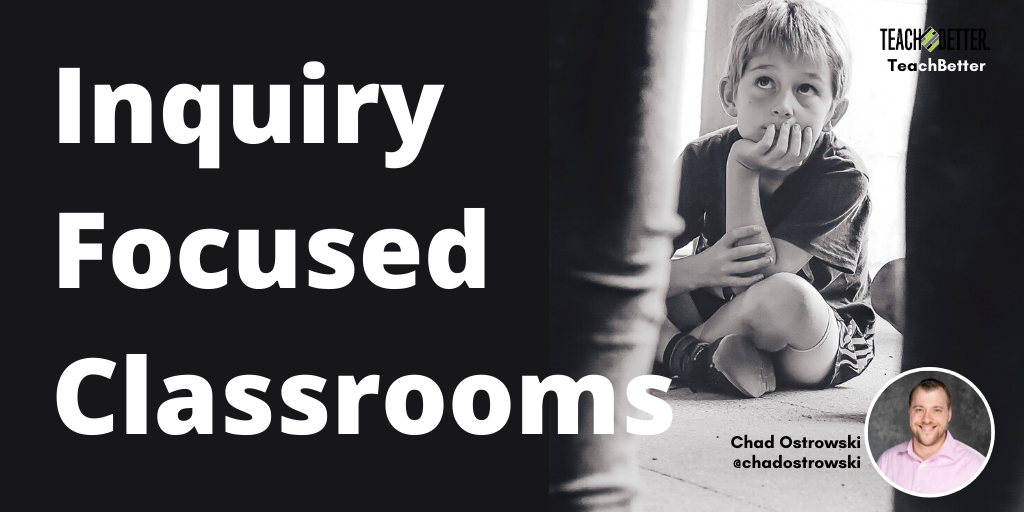TL;DR:
- An introduction to inquiry-focused classrooms.
- 3 simple questions educators can ask to determine the inquiry level in their classroom.
- Quick suggestions to increase inquiry in the classroom.
What’s an Inquiry-Focused Classroom?
While the term “inquiry” is pretty popular in education, I think sometimes it gets a bit overcomplicated. Inquiry learning can be a powerful tool that supports many other best practices as well.
You can ask yourself a few questions to determine if you are in an inquiry-focused environment or not. These questions can also help you move the needle to using inquiry-focused strategies more often.
Question 1 – Where Do Questions Come From In Your Classroom?
Honestly, this is probably going to be a mixed answer in most environments. But when we let students guide their questioning, they are more engaged in the process.
But when we let students guide their questioning, they are more engaged in the process. Click To TweetBy providing experiences that prompt or get students to ask questions, we can allow them to guide their learning and take ownership of the process. If we can provide students engaging experiences that allow them to wonder and ask why something is happening, or have them try to explain what they observed, they are now part of the process. They are generating their own questions.
An important note here is that you can easily guide these questions and conversations with prompting.
Question 2 – Where Do Answers Come From In Your Classroom?
It is my honest opinion that one of the worst things you can do as a teacher is to directly answer a student’s question.
I know this may sound odd, but let’s think about it. If we simply respond with an answer, we have completely stopped any and all further thinking. We’ve also “filled in the blank” in the simplest way possible, which will likely not be remembered as well as if further thought was provoked.
A good rule I always liked to follow in my own classroom was: “Always answer questions with a question”.
You can funnel these questions to get learners to find the answers independently. This also models thinking strategies for students, so eventually they will improve on doing it themselves.
We should never say something a student can say themselves. Anytime we can empower students to find answers or give them the right tools and resources to discover solutions, we are building skills and knowledge to repeat this process in the future.
Question 3 – Do Students Get The Chance To Wonder?
This seems simple, but it’s very important. If we demonstrate a concept, have a great debate, or foster an amazing experience with our students, it is always tempting to simply explain the why.
However, next time you are in this circumstance, stop. Ask questions instead of giving answers. Let your students guide the discussion and conversation. This is a very powerful tool and a way to build inquiry skills as well.
Inquiry is something that will come more naturally to some than others. I’m talking about teachers and students here. Once it has been established in a classroom or learning environment though, it can be a powerful way to get students thinking and learning more than ever before!
Using these 3 basic questions can help your classroom become more inquiry-focused.
[scroll down to keep reading]
About Chad Ostrowski
Chad Ostrowski is the co-founder of the Teach Better Team, the creator of The Grid Method, and co-author of the Teach Better book. But he is a middle school science teacher at heart. He now travels the country sharing his story, working with teachers, schools, and districts to help them to reach more students. Chad is also a member of the Teach Better Speakers Network.



